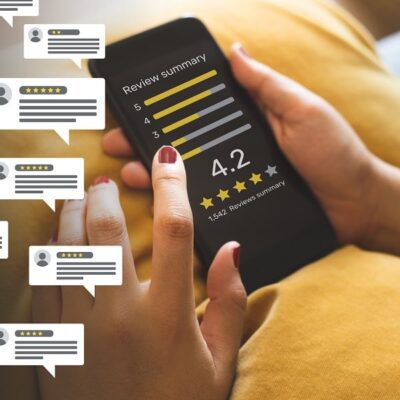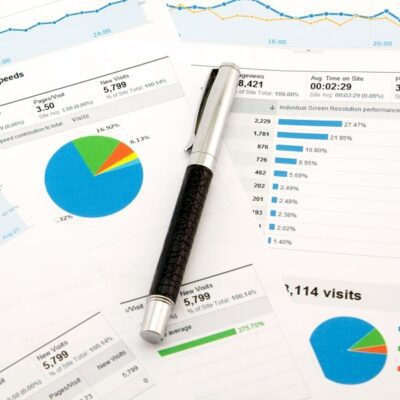As people peruse internet pages, they navigate a lot of noise and distractions. Therefore, you need strategies that clearly communicate your value proposition to prevent your marketing campaigns from drowning in this chaotic landscape.
An SEO-friendly landing page keeps your visitors focused on one campaign to increase conversions. This standalone web page is different from your web’s homepage as marketers create landing pages with the sole goal of driving a specific action. Explore the tips below to optimize your landing page for SEO (search engine optimization).
1. Targeted Keywords
The first step to creating efficient landing pages is keyword research. Select long-tail and secondary keywords that tell search engines what your page is about. For example, a plumber based in New York City may try to rank for “plumbing services in New York” or “24/7 emergency plumber in Brooklyn” for local SEO.
Use keyword research tools to discover organic and semantic keywords that support your primary keywords. Knowing what keywords your competitors rank for can also enhance your SEO efforts. Once you have your keywords, use them within the following.
Page Title
A well-optimized page title guides search engines as to where to index the landing page. Start the title from your keywords and mix primary and supplementary keywords with descriptive words. Use commas and hyphens to separate keywords.
According to Search Engine Journal, you should keep the title within 60 characters to ensure it displays well on browsers. While not necessary, you can also include your company or brand name.
Header Tags
Your landing page should have one “H1” heading tag that highlights your product or service and describes what the page is about. If you have subheadings, use “H2”, “H3” tags, and so on to organize the content.
People often overstuff header tags with keywords to rank better in search engines. However, Google’s algorithm frowns at keyword stuffing and may even penalize your site. Play around with formatting, font size, and great content to make the header stand out.
Meta Description
A meta description tag offers a short description of what users can expect on the landing page. If you are promoting a webinar, let users know that they can sign up as attendees. Include keywords in this tag but ensure that it doesn’t exceed 155 characters.
Image File Names and Alt Text
Since search engine crawlers can’t read images, they rely on the alt tags you provide to make sense of your page’s visual content. Describe the images and provide context when you write alt tags and add keywords to boost your search engine visibility.
2. Custom URL
Your landing page’s URL is an integral SEO element. Search engines respond well if your domain is in the URL, rather than letting content management systems write the URL on your behalf. By using generic URLs, you lose out on brand consistency and fail to leverage any search engine authority your site has established.
Keep your URLs clear and concise and add target keywords, but note that search engines truncate longer URLs in search results. Also, use primary keywords first in the URL to improve your search engine rankings. Another strategy is to separate phrases in the URL with slashes.
3. Backlinks
Links to your landing page from other authority sites act as votes for your site. The first step to creating a solid link-building strategy is to develop high-quality content like mind-blowing statistics, infographics, and case studies. You can cite data from other sources, but original content performs best.
The next step is to identify and reach out to influencers in your industry. Your existing networks may also be helpful, such as a blogger you interviewed on your site or an event you attended. Then, check where competitors have backlinks and use similar sources.
4. Fast Loading Speeds
Page speed matters significantly in search engine rankings. If users click away from your landing page because of slow speeds, you get high bounce rates that pull down your SEO rankings. Check loading speeds on Google Analytics or Google’s Page Speed Insights.
Luckily, simple actions like reducing the size of image files, shifting to a faster website host, and eliminating unnecessary directs and plugins can all boost a site’s load speeds. Mobile-friendly landing pages are also necessary as they let a visitor easily click on menus and links and read copy and CTAs.
5. Shareable Content
Google cannot ignore social media buzz about a popular landing page. In fact, many high-ranking pages have many social media buttons for people to share valuable content on LinkedIn and other platforms.
Place appropriate buttons prominently on the landing page to encourage visitors to share your content on their social media accounts. The more popular your landing pages are on social media, the more people visit your site, and Google finds your pages more valuable.
Landing pages are great strategies to optimize your site for lead generation. By optimizing your landing pages for SEO, you rank higher in search results for targeted keywords and increase conversions.
If all these SEO terms confuse you, trust Boostability to save the day! Contact us today to explore what our white label SEO program can do for your brand. Learn more about our Partner Program today.










